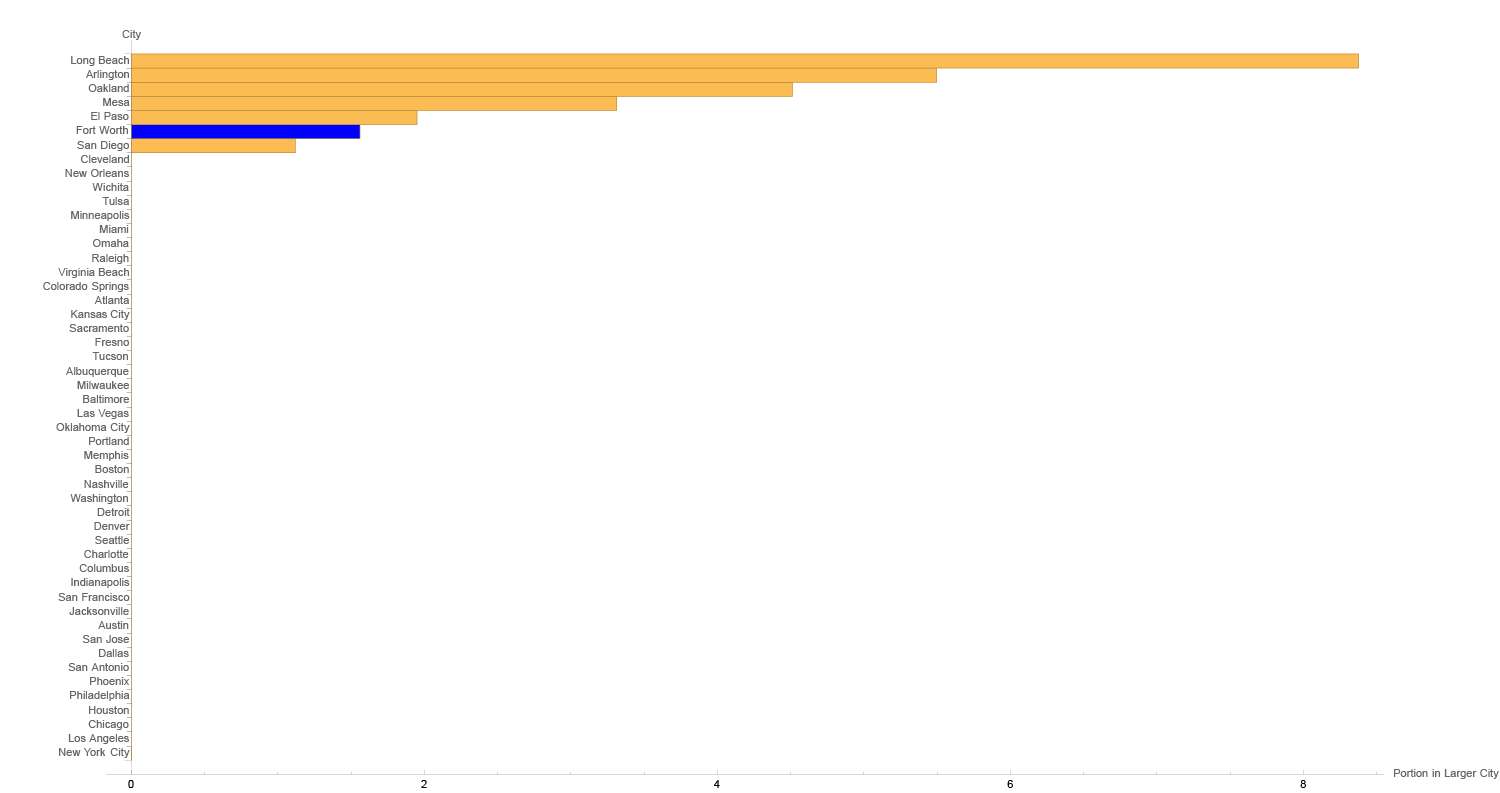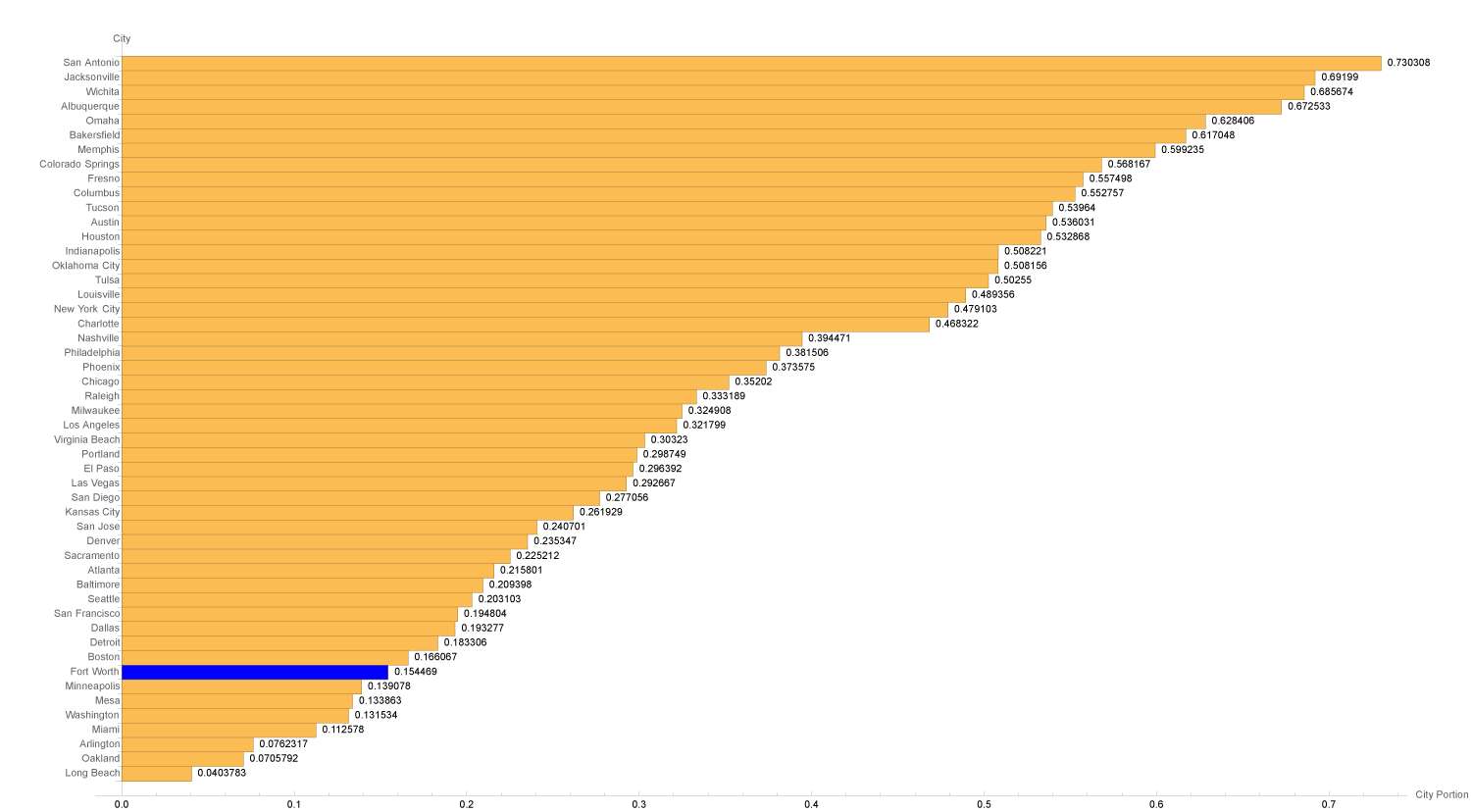We are often curious about how are city relates to other cities. Of course, the reality is that every city is unique, but that doesn't mean that we can't look into data to help us calibrate how we think about things.
One thing that has come up often lately is how our positioning in the region might influence how we look from the outside. I'm sure population alone is not the best indicator, and we should dig deeper as time goes on. But since we are all inclined to look toward cities of similar size, I wanted to look into how that regional influence actually affects this.
Some caveats up front: The tool I'm using (Mathematica) has not updated their population data source from the 2015 estimated data, and so this is stale. I will re-run this when the 2020 data becomes available. The other thing is that I did not have the patience to filter out non US cities -- cities are being treated without state or national borders -- I'm sure the influence is not nothing with cities being in proximity across borders, but I'm sure it is not the same.
What I have done is to look at the top 50 US cities by population, and then extended out from the borders of those cities to make note of cities that are nearby. I arbitrarily chose 20 miles as that distance. It is important to note that this is not center-to-center distance, but border to border distance. That is particularly important for a land-expansive Fort Worth. Lastly, I'm making no effort to deal with unincorporated populations, just the cities.
The intention it to try to understand what impact being close to other cities might have on our city compared to if we were more "stand alone"
Here are the (2015) populations of the top 50 cities:

Here are the counts of cities who are within 20 miles of these cities. Obviously NY does things a little differently, but the list has many familiar places:

To give you an idea of the range of cities around our city, here is an unordered list -- they may seem to go further than you would expect, but I believe that it is all about the extents of the two city limits:

Having that information we can look at regional populations around cities:

But I now we get into more interesting data.
Here is the portion of the region that lives in the city:

Here are the number of cities that are larger within the region. For both El Paso and San Diego, that larger city is in Mexico. As you can see, it is rare for a top 50 city to be near another large city:

This one is a little obscure, and it shows the relative number of people who live in a larger city compared to the target city.
To give an example, for each person living in Fort Worth, 1.56 people chose to live in the larger city of Dallas.

I don't know if there are any conclusions to be made, but it does look like we find ourselves in a relatively unusual context compared to other cites.
Despite being 55% our size, maybe we can look at Mesa AZ as being comparable in some ways. They have far fewer cities around and a more dominant large city, but their regionality has some similarity.
In the future I'm going to look into extending this with economic information. I'd also like to look at commercial concentration and schools. But population is a start.
























